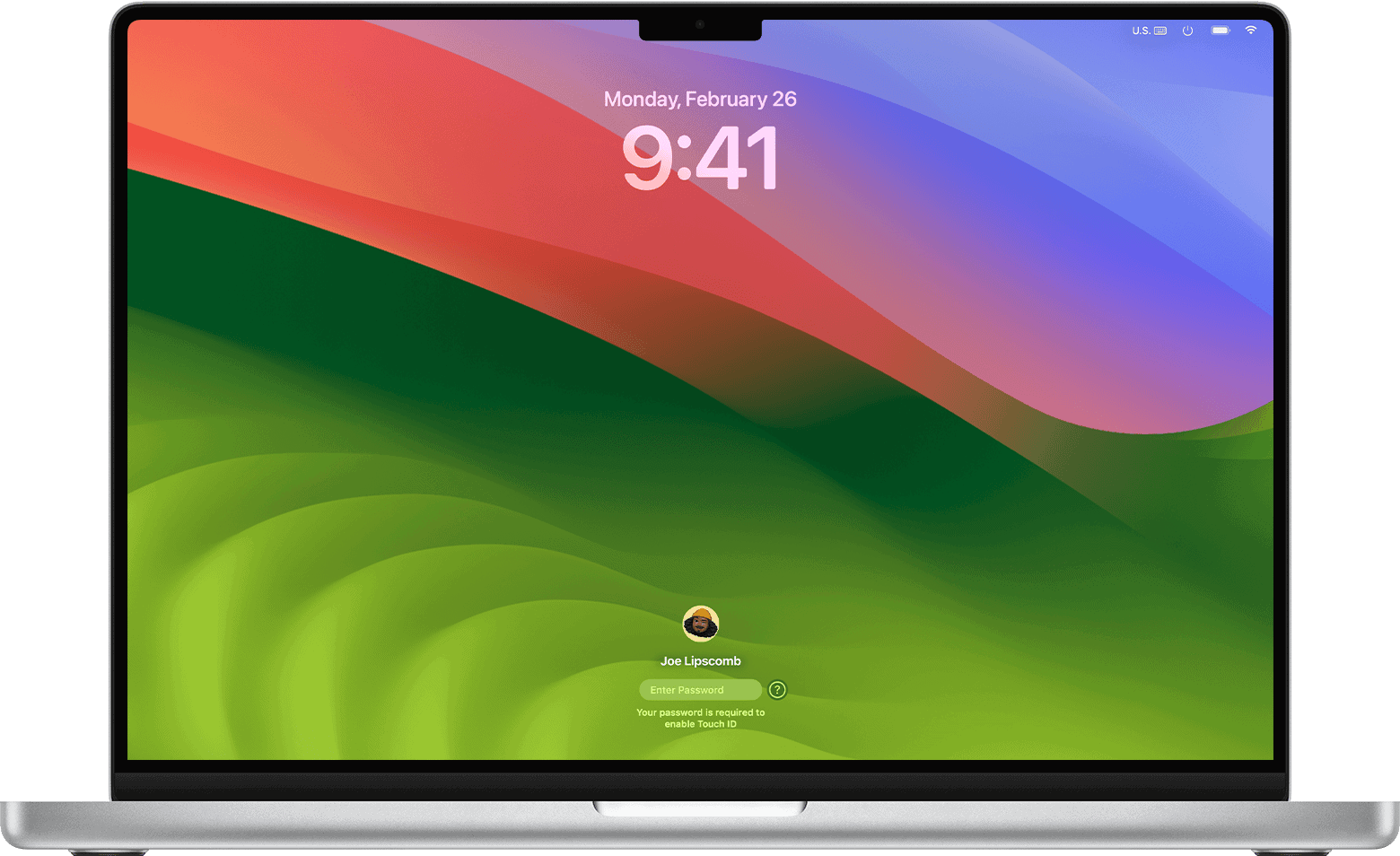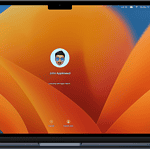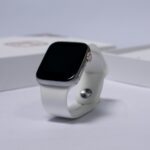Apple is steadily advancing security features for MacBooks, and it’s widely expected that Face ID is on the roadmap. So far though, this feature has not been rolled out and Apple hasn’t made any official announcements about a timeline. But FaceID integration for Macs & Macbooks seems like an inevitable evolution of security – one that has been proven very successful for iPhones on iPads. Getting this technology to Mac users would be a huge leap forward when it comes to security as it would improve quick access and enhance safety and usability. Being able to use FaceID on desktop & laptop apps (including things like online shopping) and tie-ins with other Apple devices and protections would be a huge deal as well.
The incorporation of Face ID into MacOS would revolutionize personal computing security and align with a broader trend in the tech industry to prioritize ease of use and robust security.

Mac Security: Exploring Biometric Options
Face ID on Macs: Not Yet a Reality
While Face ID has become a staple on iPhones and iPads, it hasn’t made its way to MacBooks yet. Apple has focused on Touch ID for biometric authentication on Macs, integrating it into the Touch Bar or the power button.
Why No Face ID on Macs?
Several factors contribute to the absence of Face ID on Macs. One reason is the technical challenge of integrating the TrueDepth camera system, which powers Face ID, into the slim design of MacBooks. Another factor is Apple’s emphasis on Touch ID as a convenient and secure way to unlock Macs and authorize payments.
Alternative Biometric Options
While Face ID may not be available, MacBooks offer alternative biometric security features:
| Feature | Description | How to Use |
|---|---|---|
| Touch ID | Fingerprint sensor for secure login and authentication | Place your finger on the Touch ID sensor (power button or Touch Bar) |
| Apple Watch Unlock | Unlock your Mac automatically when wearing your Apple Watch | Enable in System Preferences > Security & Privacy |
The Future of Face ID on Macs
Apple has filed patents related to Face ID technology for Macs, hinting at the possibility of its inclusion in future models. However, there’s no official confirmation from Apple on when or if Face ID will be integrated into MacBooks.
Key Takeaways
- MacBook could integrate Face ID for user authentication.
- Apple’s progression points to future laptops with enhanced security.
- Face ID’s adoption could reflect industry trends towards convenience and security.
Development and Implementation of Face ID on MacBook
The introduction of Face ID to the MacBook could be a significant development in Apple’s biometric authentication approach. It would build on the success of Face ID in iPhones and iPads while considering the unique hardware and security needs of MacBook users.
Evolution from iPhone to MacBook
Face ID first appeared on the iPhone in 2017. It uses advanced facial recognition technology to provide secure authentication. Since then, rumors have suggested that Face ID might come to the MacBook. In 2022, hints of this became more concrete when a patent application was revealed. This fueled speculation that Face ID could be included in MacBook Pro models aligning with the release of macOS 15, allowing users to unlock their devices with just a look.
Hardware Integration and Screen Considerations
Integrating Face ID into a MacBook involves placing the TrueDepth camera system, which powers Face ID, into the laptop’s screen. This is no small feat given the slim design of MacBook lids. Engineers must address the challenge of fitting the necessary sensors without compromising the MacBook’s sleek profile. Additionally, the Retina display quality must be maintained even with new hardware components embedded near the camera.
Security and Privacy Enhancements
The MacBook’s Face ID aims to set new benchmarks for security and privacy on laptops. It would work in tandem with Apple’s T2 or M-series chips, both equipped with a secure enclave to safeguard facial data just like the iPhone. With these enhancements, sensitive actions like making payments with Apple Pay or accessing password-protected apps would become more secure.
Apple Silicon and AI Integration
The marriage of Apple’s custom silicon, such as the neural engine on the M-series chips, with AI ensures smooth operation of Face ID. This integration is key for real-time facial recognition processing and maintaining the MacBook’s performance. The neural engine leverages machine learning to provide a seamless and efficient authentication experience, distinguishing the MacBook as a leader in secure access technology.
Market Impact and Consumer Adoption
The introduction of Face ID to MacBooks marks a significant shift in user access and security for Apple’s line of laptops. This change impacts not just users but the entire tech industry.
Comparison With Competitors’ Technologies
Apple’s implementation of Face ID in MacBooks invites a direct comparison with technologies like Windows Hello. Windows laptops have integrated biometric authentication for years now. Apple’s move could motivate competitors to refine their own systems. It’s important to note that Face ID relies on advanced technology like a light pattern recognition module that distinguishes it from many existing systems.
Potential for Future MacBooks and Other Apple Devices
With the implementation of Face ID, future MacBooks may see a redesign where the notch, accommodating the new sensors, becomes standard. This could extend to other devices like the 24-inch iMac and iMac Pro. Patents suggest that Apple may integrate Face ID across its product lineup.
User Accessibility and Convenience
Face ID on MacBooks simplifies access. No more typing passwords or using fingerprint readers. This ease of unlocking could benefit users with disabilities, offering them a more accessible way to log into their devices. System settings might provide customizations to accommodate various user needs.
Impact on Sales and Industry Trends
The availability of Face ID on MacBooks could influence consumer purchases. Deals may emerge, similar to Best Buy’s Memorial Day sale, encouraging users to upgrade. Such features could boost sales and set new standards for portable computing devices. Industry reviews often highlight tech advancements, which in turn affect user choices and the broader market.
Apple’s advancements, such as new patents around security, typically create a buzz, as seen in reports from sources like AppleInsider and MacRumors. User reviews and the reception of the Face ID feature in the upcoming WWDC coverage could be key indicators of the industry’s direction.







